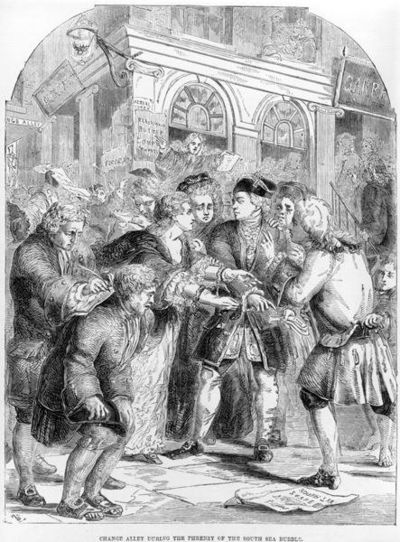Annotation:Change Alley: Difference between revisions
No edit summary |
m (Text replacement - "garamond, serif" to "sans-serif") |
||
| (7 intermediate revisions by one other user not shown) | |||
| Line 1: | Line 1: | ||
'''Back to [[{{BASEPAGENAME}}]]''' | '''Back to [[{{BASEPAGENAME}}]]''' | ||
---- | ---- | ||
<p><font face=" | <p><font face="sans-serif" size="4"> | ||
'''CHANGE ALLEY.''' English | '''CHANGE ALLEY.''' AKA and see "[[Back of the Change House]]," "[[Cadger o' Crieff (The)]]," [[Cuckold's Song]]," "[[Hame Cam Oor Gude Man]]." Scottish, English; Country Dance Tune (cut time). D Major. Standard tuning (fiddle). AABB. Change Alley [http://en.wikipedia.org/wiki/Exchange_Alley] was originally called Exchange Alley and was located not far from the Royal Exchange. It provided a convenient shortcut from there to the Post Office. Change Alley was the location of several famous London coffeehouses, including Garraways (open 1656 to 1872, frequented by merchants and medical men) and its next-door neighbor, Jonathan's (open from 1667 to 1777, patronized by Stock-jobbers, and also astronomers, including Edmund Halley {Halley's Comet} and Robert Hooke). | ||
[[File:changealley.jpg| | [[File:changealley.jpg|400px|thumb|left|Change Alley during the frenzy of the South Sea Bubble]] The tune is older than its printing in Preston's 1800 collection, having been included in Scottish musician David Young's 1734 manuscript called '''The Drummond Castle Manuscript''' or ''''The Duke of Perth Manuscript''', for whom Young compiled it. Young's title was "[[Cadger o' Crieff (The)]]." See note for "[[annotation:Back of the Change House]]" for more. | ||
<br> | <br> | ||
<br> | <br> | ||
</font></p> | </font></p> | ||
<p><font face=" | <p><font face="sans-serif" size="4"> | ||
''Source for notated version'': | ''Source for notated version'': | ||
<br> | <br> | ||
<br> | <br> | ||
</font></p> | </font></p> | ||
<p><font face=" | <p><font face="sans-serif" size="4"> | ||
''Printed sources'': Preston ('''Preston's Twenty-Four Country Dances for the Year 1800'''), 1800. | ''Printed sources'': Preston ('''Preston's Twenty-Four Country Dances for the Year 1800'''), 1800. | ||
<br> | <br> | ||
<br> | <br> | ||
</font></p> | </font></p> | ||
<p><font face=" | <p><font face="sans-serif" size="4"> | ||
''Recorded sources'': <font color=teal></font> | ''Recorded sources'': <font color=teal></font> | ||
</font></p> | </font></p> | ||
Latest revision as of 11:53, 6 May 2019
Back to Change Alley
CHANGE ALLEY. AKA and see "Back of the Change House," "Cadger o' Crieff (The)," Cuckold's Song," "Hame Cam Oor Gude Man." Scottish, English; Country Dance Tune (cut time). D Major. Standard tuning (fiddle). AABB. Change Alley [1] was originally called Exchange Alley and was located not far from the Royal Exchange. It provided a convenient shortcut from there to the Post Office. Change Alley was the location of several famous London coffeehouses, including Garraways (open 1656 to 1872, frequented by merchants and medical men) and its next-door neighbor, Jonathan's (open from 1667 to 1777, patronized by Stock-jobbers, and also astronomers, including Edmund Halley {Halley's Comet} and Robert Hooke).

The tune is older than its printing in Preston's 1800 collection, having been included in Scottish musician David Young's 1734 manuscript called The Drummond Castle Manuscript or 'The Duke of Perth Manuscript, for whom Young compiled it. Young's title was "Cadger o' Crieff (The)." See note for "annotation:Back of the Change House" for more.
Source for notated version:
Printed sources: Preston (Preston's Twenty-Four Country Dances for the Year 1800), 1800.
Recorded sources:
Back to Change Alley
